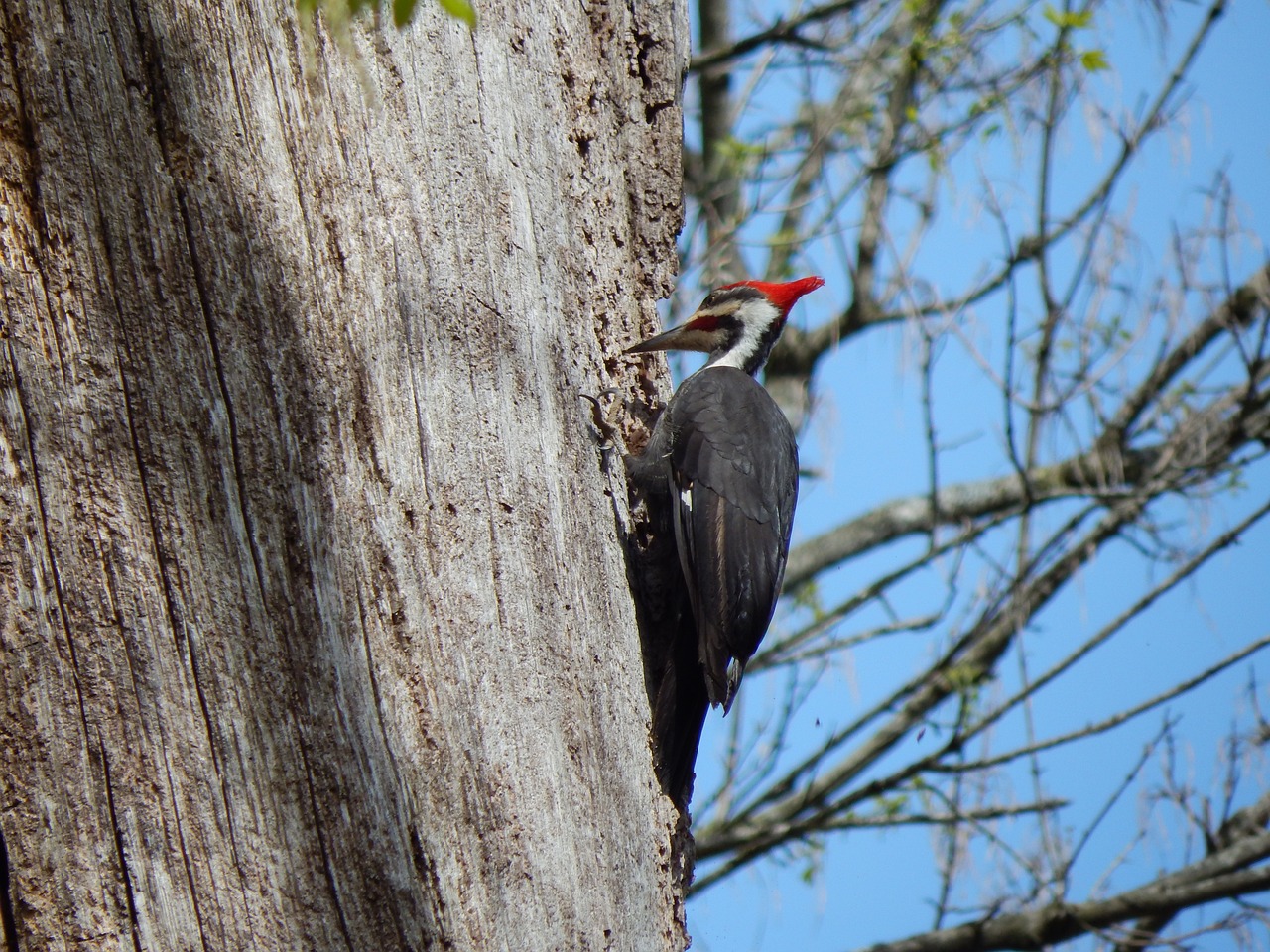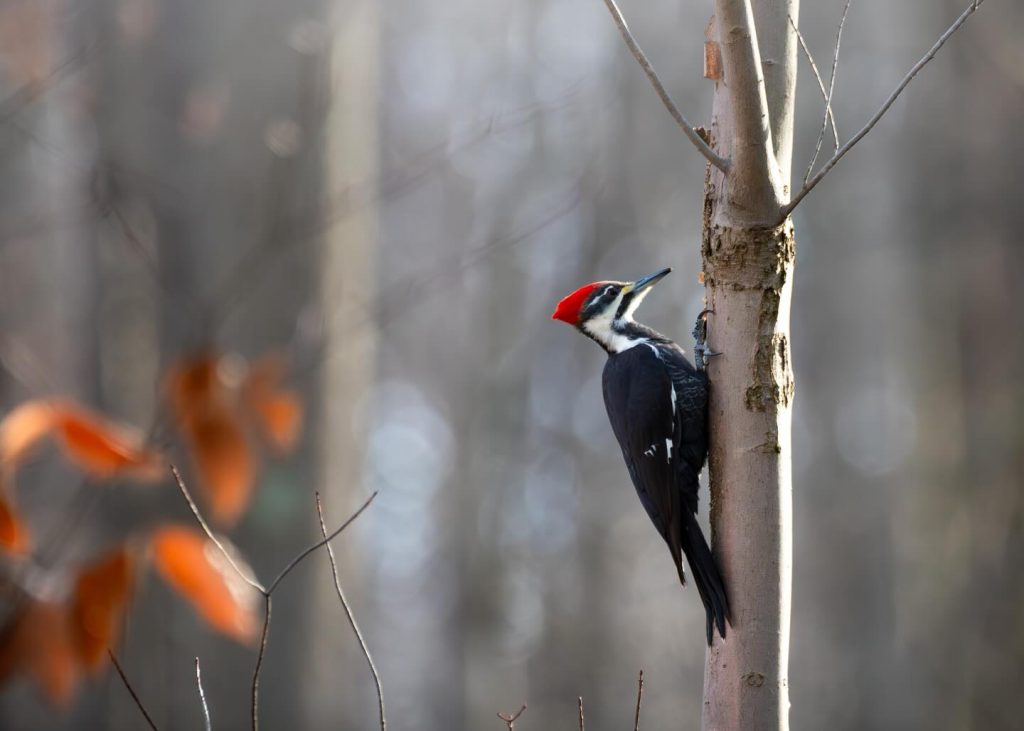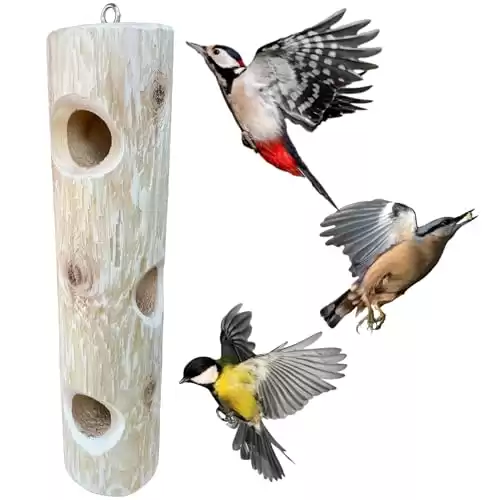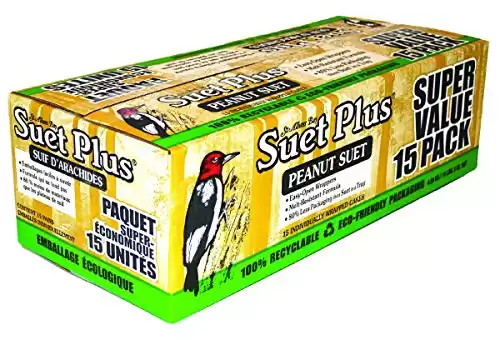
How to attract pileated woodpeckers to your bird feeder
Helpful guide for success in attracting pileated woodpeckers
About the Pileated Woodpecker
By Alex Busato
𝘈 𝘳𝘪𝘨𝘩𝘵 𝘫𝘰𝘭𝘭𝘺 𝘰𝘭𝘥 𝘦𝘭𝘧…
Pileated Woodpeckers (𝘋𝘳𝘺𝘰𝘤𝘰𝘱𝘶𝘴 𝘱𝘪𝘭𝘦𝘢𝘵𝘶𝘴) are the largest woodpecker in North America and one that in my opinion exudes the holiday spirit. From their jolly laughing calls that fill our eastern forests each year to their built-in Santa hats (called a 𝘱𝘪𝘭𝘦𝘶𝘮,their namesake), these birds are always a delight to see in the winter when a lot of other birds have migrated south.
Pileated Woodpeckers are also one of the most important gift-givers in our eastern woodlands (even if they don’t really realize it) and a 𝘬𝘦𝘺𝘴𝘵𝘰𝘯𝘦 𝘴𝘱𝘦𝘤𝘪𝘦𝘴 that a myriad of other species rely on for their way of life. When searching for insects to eat or choosing a place to nest, Pileateds and other woodpeckers use their strong beaks to excavate large holes in the wood of standing trees. Nest holes especially, with narrow entrances and large interiors, provide safety for the woodpecker’s young for a season. But rather than reuse them every year, woodpeckers gift these finely-crafted homes to other species in need.
Countless insects, rodents, bats, and other cavity-nesting birds need abandoned woodpecker holes to survive and reproduce each year since they can’t excavate them on their own. And over the years as these cavities rot out they can house larger species like Wood Ducks, raccoons, kestrels, and owls. The gift that keeps on giving!
This lovely female gifted me my closest encounter and best photos of her species to date during my recent Christmas Bird Count. I especially love the lighting and those foreground leaves.
Let me know what you think, and I wish a very happy holiday to you and yours!

Photo by Alex Busato
Where do pileated woodpeckers live?
People are drawn to the pileated woodpecker for various reasons, making it a beloved species among bird enthusiasts and nature lovers. One key factor is their impressive size and striking appearance. Pileated woodpeckers are the largest woodpeckers in North America, boasting vibrant black and white plumage with a distinctive red crest atop their heads. Their unique and dramatic drumming sounds, echoing through the forest, add to their allure. Birdwatchers appreciate the challenge of spotting these elusive birds due to their preference for wooded habitats, making each encounter a rewarding experience. Additionally, the ecological role played by pileated woodpeckers in controlling insect populations by foraging on wood-boring insects is valued, contributing to the overall health of forest ecosystems. The combination of their size, distinctive appearance, captivating behaviors, and ecological significance makes the pileated woodpecker a fascinating and appreciated species among those who admire the wonders of nature.
The pileated woodpecker can be found in various forested habitats across North America. These areas include mature and dense deciduous or mixed forests, as well as coniferous woodlands. Pileated woodpeckers prefer habitats with large trees, especially those with dead or decaying wood, which provides abundant food sources in the form of wood-boring insects. They are often associated with old-growth forests but can adapt to other wooded environments, including suburban areas with extensive tree cover. The distinctive drumming sound produced by these woodpeckers is a common feature in their territories, as they excavate large rectangular holes in search of insects and establish their presence in the forested landscapes of North America.
Basic tips on attracting the pileated woodpecker to your backyard
Attracting pileated woodpeckers to your bird feeder can be a rewarding experience. While these woodpeckers typically forage for insects in trees, you can entice them to visit your feeder with a few strategies:
Suet Feeders: Pileated woodpeckers are particularly fond of suet, especially during colder months when insects may be harder to find. Offer suet cakes or blocks in specialized suet feeders to attract them.
Large Platform Feeders: Pileated woodpeckers are sizable birds, and they prefer larger feeding platforms. Install a sturdy platform feeder that can accommodate their size, allowing them to perch comfortably while feeding.
Insect-Infused Suet: Consider using suet blends that contain insects, as this mimics their natural diet. Insects are a significant part of a pileated woodpecker’s food source, and they may be more attracted to suet with added insect content.
Tree Trunks and Logs: Mimic natural foraging conditions by attaching suet feeders to tree trunks or large logs. Pileated woodpeckers are accustomed to foraging on vertical surfaces, so this can make your feeding station more appealing.
Quiet Environment: Pileated woodpeckers are sensitive to disturbances, so creating a peaceful and quiet environment around your feeder can encourage their visits. Avoid sudden movements or loud noises that might startle them.
Patience and Observation: Pileated woodpeckers may not immediately discover a new feeder. Be patient and observe their natural behaviors in your area. Once they identify the food source, they are likely to return.
Provide Water: Having a water source nearby can attract pileated woodpeckers, as they need to drink and bathe. Consider adding a bird bath or water feature to your backyard.
Remember that attracting specific bird species can take time, and success may vary depending on your location and the surrounding environment. Be consistent with your offerings, and enjoy the opportunity to observe these impressive woodpeckers in your own backyard.
Proven success in attracting the pileated woodpecker
Several of our live streaming bird feeder systems have been very successful at attracting the pileated woodpecker. See our PA Bird Feeder 1 Live Stream and PA Bird Feeder 2 Live Stream. We have designed special log feeders large enough for the pileated woodpeckers that we fill with suet.
The tail of a Pileated Woodpecker serves a crucial role in aiding its feeding behaviors. Pileated Woodpeckers are adept at foraging for insects, particularly carpenter ants, by excavating cavities in dead trees. The long, sturdy tail functions as a stabilizer, providing balance and support as the woodpecker hammers its powerful bill into the wood. This tail serves as a counterbalance, allowing the bird to maintain stability on vertical surfaces while using its specialized bill to extract insects from deep within the wood. In essence, the tail of a Pileated Woodpecker is a vital tool that enhances its ability to efficiently feed and is the main factor in choosing a feeder that can accommodate this large bird.
These log feeders were built from logs found in the woods. They are from 30″ to 36″ in length and typically 5 1/2″ to 6″ in diameter. We drill flat bottom holes using a Forstner bit 2″ to 2 1/4″ in diameter. Link for 2 1/4″ Forstner Bit. The log feeder on PA Bird Feeder 1 was a new design. We cut notches in the log to fit standard sized suet cake cage feeders. Link for Suet Cage feeder here.
Female Pileated Woodpecker Feeding on PA Bird Feeder 1
A Pair of Pileated Woodpeckers Feeding on PA Bird Feeder 2
PixCams Recommended Woodpecker Feeders
16″ Natural suet feeders attract clinging birds such as Woodpeckers, Chickadees, Nuthatches.
Perfect for your suet cages for woodpeckers and nuthatches



Nice blog here Also your site loads up very fast What host are you using Can I get your affiliate link to your host I wish my site loaded up as quickly as yours lol